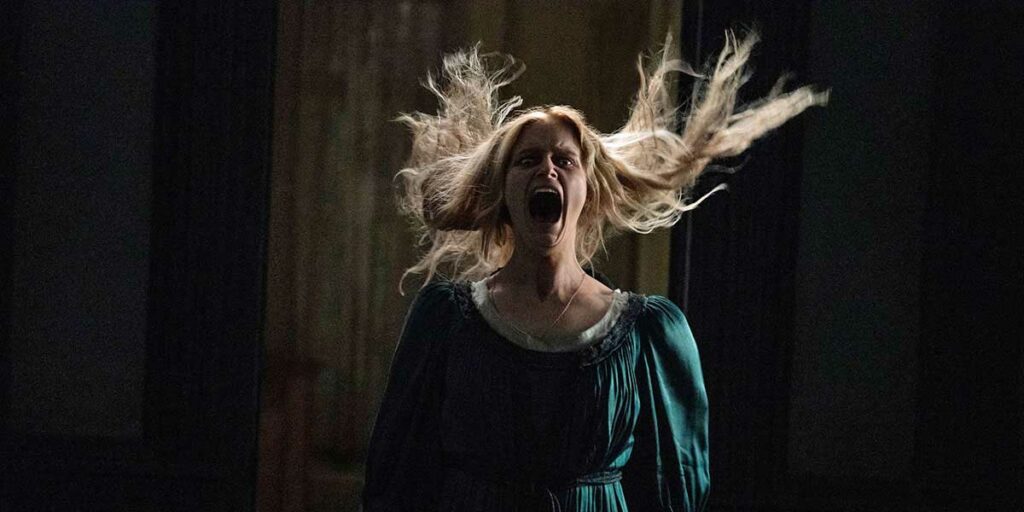Guillermo Del Toro’s Cabinet of Curiosities is a strong mix of horror tales, and each installment of this Netflix anthology has a bold vision.
Guillermo Del Toro is one of the most acclaimed directors working today. He has created critical darlings such as the Best Picture Winning The Shape of Water and has been using his large platform and following to highlight new voices in horror as a producer. With Guillermo Del Toro’s Cabinet of Curiosities, he continues his mission to support developing horror directors by supplying them with a collection of short horror stories that cover a monstrous range of themes and villains. Below are my individual reviews of this Netflix horror anthology series.
LOT 36

The Plot: A military vet named Nick (Tim Blake Nelson) purchases a storage unit at an auction that supposedly belonged to someone who has recently passed away. He avoids all red flags and warnings that people gave him about both the storage unit and the old man who used to own it and, in doing so, he gets tangled in a situation that certainly no one expected.
The Good: Director Guillermo Navarro is at his best when the tension starts to rise. Having a strong sense of direction and camera control is Navarro’s greatest asset, especially in the scenes that take place inside the storage building. Even though the storage unit scenes only take up around half of the episode, these are the strongest portions of the episode, creating a suspenseful atmosphere that perfectly rides the line between fun and scary. Toward the end of the episode, we get a glimpse of a monstrous villain whose creature design (Mike Hill) was some of the best that I have seen in recent horror stories. It was gross but extremely cool to look at, right on par with some of the other projects Del Toro has been involved with.
The Bad: Unfortunately, Lot 36’s weakest points all have to do with the writing. The creature showcased at the end of this episode is awesome to look at, but the road to get to that creature is extremely slow. At first, the episode does start on an interesting note, but that interest eventually leaves after twenty minutes or so when it feels like not much has still happened. On top of this, our protagonist Nick is written to be a greatly dislikable character. While writers Del Toro and Regina Corrade were greatly successful in crafting a truly terrible person, some of the dialogue surrounding Nick is so cheesy that it makes the character seem like a caricature at times.
Overall: Lot 36 still manages to be a spooky enough time that it’s definitely worth a watch. Yes, it takes its time moving along, but once you get to the final climax, it will all be worth it. 6/10
GRAVEYARD RATS
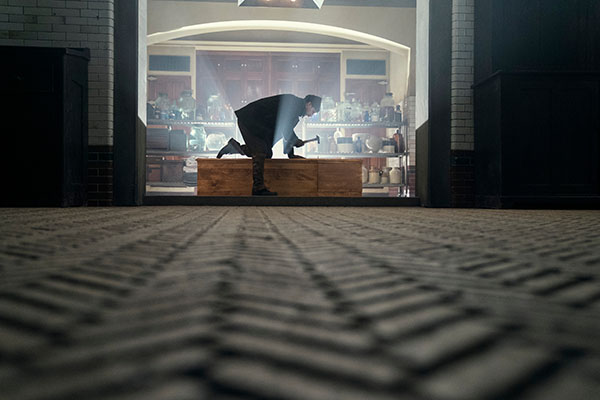
The Plot: A grave robber named Mason (David Hewlett) breaks into coffins to steal anything that could help him pay off his piling debt. One day, as he is in the middle of stealing, he gets placed in a situation with the titular graveyard rats that makes Mason realize that he might have bitten off more than he could chew.
The Good: The best part of the episode is the fact that it tackles so many different and unique fears that, even if you are not outright scared of certain things, they will definitely make you uncomfortable. Having a lifelong fear of rats myself, this episode was horrifying to me in the best way. The combination of claustrophobia and rats that could show up anywhere makes the second half of this episode a nonstop thrill ride filled with effective jump scares and a lot of screaming from both the audience and the protagonist. Speaking of the protagonist, this episode is a showcase for David Hewlett. Every single scene revolves around him and his emotional state and he is able to carry the narrative with ease and give a surprising amount of range in less than forty minutes. Because of his performance, it is a lot easier to care about this unlikeable character who is doing bad things which definitely helps make the overall episode more intense. Finally, it would be terrible if I were not to talk about Hewlett’s scream at the end of this episode because it is one of the most hair-raising screams I’ve heard in horror within the last few years.
The Bad: There really isn’t much to criticize, since so much of the episode plays into my personal fears, but the biggest issue I have with Graveyard Rats has to do with the main villain. I don’t want to spoil what it is, because it was a true shock when I saw it, but given the elaborate creature design of the last episode, I was disappointed with how this one looked. Don’t get me wrong, the creature is still quite scary, but from a technical point of view, and given how intense the overall episode is if the villain looked a little scarier and a little less cartoonish, this could have easily been one of the scariest things I have seen all year.
Overall: Graveyard Rats manages to do a lot with its short runtime taking fears such as claustrophobia, rats, and dead bodies and raising the stakes for our main character to nightmarish heights. It’s anchored by an amazing performance from David Hewlett, and I wouldn’t be surprised if this became one of my favorites from the whole season. 8/10
THE AUTOPSY
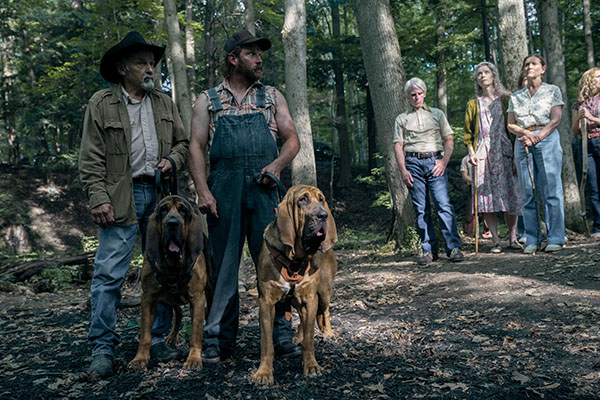
The Plot: After a few missing person cases end up leading to a suspect who is presumed dead, a medical examiner is tasked to find out what really happened by performing an autopsy.
The Good: The Autopsy is masterfully crafted. From the cinematography to the practical effects, a lot of the technical aspects of this episode showcase some of the best work that is being done in the horror genre. Along with this, David Prior’s direction makes this slow-burn story surprisingly engaging. Even though the overall episode is very well crafted, the final fifteen minutes of The Autopsy are some of the best horror I have seen all year. The tension that is created is so strong that it is impossible to take your eyes off the screen. Finally, when the tension is broken the body horror elements that are included in the climax make the wait more than worthwhile, almost to the point where you forget what else happened prior.
The Bad: I hinted at this earlier, but one of the main issues with The Autopsy is the pacing. As I watch more and more of Guillermo Del Toro’s Cabinet of Curiosities, I realize that most of the episodes are a slow burn. My issue with slow burns is that the ending has to make the wait worth it, but in this episode’s case, the ending is so good that it overshadows what happened prior.
Overall: Overall, this is the most well-crafted episode by far, even if it feels like not much happens before the end. David Prior’s directing skills really shine throughout making this an essential Halloween repeat watch. 8/10
THE OUTSIDE
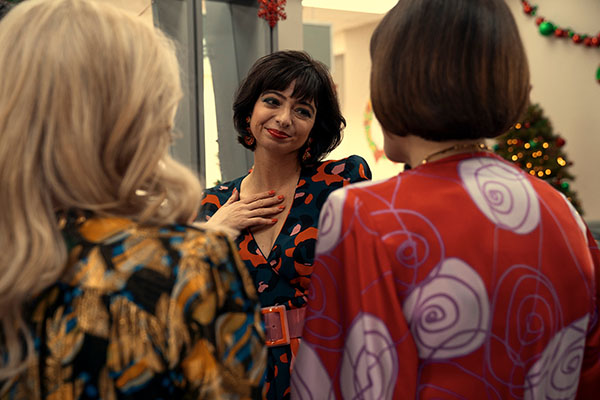
The Plot: A self-conscious woman named Stacey (Kate Micucci) gets invited to a Christmas party with her elite coworkers where she gets a facial cream that is supposed to be amazing. As she starts to apply the cream, the results are not what she initially anticipated.
The Good: As someone who loves aggressive satire, The Outside is as good as gold. From the first scene, there is this unique tone established that is both campy and uncomfortable. It’ll have you half smiling half cringing at the episode’s somewhat sick sense of humor. These are all anchors in our leading lady’s performance. She has to play such a delicate role of someone that is so broken deep down and can be convinced to partake in her treatment so easily. Blank gives a great leading performance but what made the satire so interesting was Dan Stevens’ performance. He gets the opportunity to have a unique role in our protagonist’s mental state and he makes the absolute most of his limited screen time.
The Bad: Since the satire and style was right up my alley, The Outside has minimal flaws. The only issue is that this episode has only revolved around one particular scene. Without getting into spoilers, theirs is this personification of the villain which makes the satire go a little too far, but the boldness of this scene makes it respectable. On top of this, even though this takes place in a horror anthology, the genre expectations limit this episode from reaching its maximum potential. The Outside is more of the creepy side than scary and a lot of the audience viewing this might get turned off by the sudden change in tone.
Overall: From the fetishizing view of the human body to the caricaturesque performances, The Outside is not what you would expect from Guillermo Del Toro’s Cabinet of Curiosities, but that’s exactly what makes it so brilliant. This is the breath of fresh air that audiences might need after the first three installments and this episode more than any other had made me more excited for what Guillermo del Toro has in store for us than ever before. 9/10
PICKMAN’S MODEL
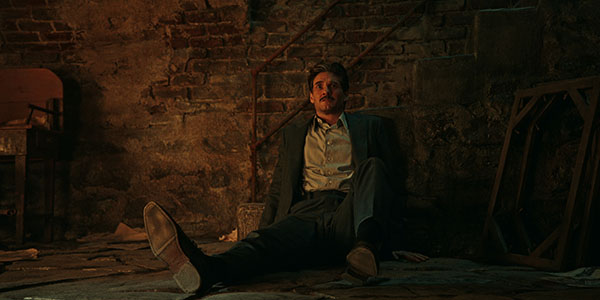
The Plot: In the early 1900s, art student William Thurber (Ben Barnes) meets Richard Pickman (Crispin Glover), a fellow student who crafted an art piece that will forever change both of their lives.
The Good: As soon as Pickman’s Model started, it was clear that, just like the other episodes, it was extremely well crafted. The whole aesthetic of this episode is easily the best part and is one of the main reasons why this episode ends up being entertaining. On top of this, the production design (Tamara Deverell), especially when the more dreamlike elements pick up, is phenomenal, giving some of the most visually striking scenes of the whole series.
The Bad: Unfortunately, even though the technical aspects of this episode are a marvel, the story elements are by far the weakest part of Pickman’s Model. Throughout the episode, there is a consistent rise in suspense as the protagonist’s situation gets worse and worse. Every other episode in Guillermo Del Toro’s Cabinet of Curiosities has utilized suspense to craft a big climax and a dark conclusion. While Pickman’s Model tries to replicate this formula, by the time the suspense reaches its tipping point, there is nothing left to keep us interested in the characters or the story as a whole. Even though the last few seconds of this episode were chilling, the rest of the third act was just uninteresting.
Overall: Even with visually stunning sequences, Pickman’s Model ends up being the worst episode of the series, making it a prime example of why filmmakers should never choose style over substance. 5/10
DREAMS IN THE WITCH HOUSE

The Plot: Years after his twin sister’s death, William (Rupert Grint, of the Harry Potter franchise) is determined to find out if there is any way to get her back. With the aid of an experimental drug, he realizes that his sister is in another realm and sets out to find her.
The Good: From the intro scene on, Dreams in the Witch House captures your attention. Unlike the episodes prior, this one is pretty fast paced which for the majority of its hour duration, works very well in its favor. Having someone be transported to another realm to save someone is not the most original concept, especially in fantasy horror, but here, it never feels like it’s cliche or repetitive. This is mainly due to how inviting this story is. There is a stronger emotional heartbeat that can be felt, especially as the plot picks up and as bad things keep happening to the main characters. As with every other episode in Guillermo Del Toro’s Cabinet of Curiosities, Dreams in the Witch House is extremely well crafted, which definitely helps with keeping viewers engaged.
The Bad: The plot of this episode is not new territory, and, while that is not really a bad thing, Dreams in the Witch House as a whole feels a little slight. Especially compared to the other episodes, once the story concludes, this episode just was not on the same level as its predecessors. This is mainly due to the lack of atmospheric tension that is present in most of the other episodes. This one isn’t as inviting and with its longer runtime, makes the episode less fun and more of an exhausting watch.
Overall: Dreams in the Witch House is an entertaining watch, but it’s not without its flaws. Feeling less scary and exciting, it doesn’t fully feel like it’s a part of this series, even if it’s still overall a good installment. 6/10
THE VIEWING

The Plot: After receiving a mysterious invitation to “the viewing,” four extremely accomplished strangers arrive at an unknown man’s house unaware of what’s to come.
The Good: As soon as the first image comes up on the screen, you can tell that The Viewing is going to have a whole different aesthetic than the others. This episode has a more hip 70s vibe instead of the usual gothic tones that we have grown to know, but, similarly to The Outside, it’s the breath of fresh air that we needed. On top of this, the narrative differs from the usual episodes in this series. Prior to The Viewing, every other episode was an individual character study, with the topic greatly varying, but this one is a pure ensemble piece, and it works extremely well.
Having the biggest and most well-known cast so far, the performances are easily the best part of this episode. Everyone in the cast is on top of their game with an especially great turn from Eric André, who plays a famous musician. The episode is a slow burn in which the majority of scenes take place within a single conversation. Director Panos Cosmatos is able to take what is the least eventful episode into the most entertaining one, by slightly raising the intensity with every shift in conversation into an extremely explosive and satisfying ending.
The Bad: There is really not much wrong with The Viewing. Since it is so dialogue based, the conversation might not be everyone’s cup of tea, since it has less horror and more thriller vibes, but for others, it’ll be exactly what this series needed.
Overall: From start to finish, The Viewing is exactly what Guillermo Del Toro’s Cabinet of Curiosities should be: unique, fun and with just the right amount of discomfort, where you don’t know what to expect. Driven by a fantastic ensemble, this should be a perfect addition to anyone’s modern horror classics list. 9/10
THE MURMURING

The Plot: After a recent tragedy, married ornithologists travel to a secluded location to study a bird species’ flight pattern. At the house that they are staying at, there start to be strange occurrences that no one can explain.
The Good: The Murmuring is at its best when it leans into its emotion. This is a very personal story and in order for it to work, the audience needs to be in tune with the main character’s emotions. Due to emotionally vulnerable performances from Essie Davis and Andrew Lincoln as Nancy and Edgar Bradley, the married ornithologists, the viewer is able to do exactly just that. This episode is definitely the soberest out of this series, but because of this more human story, you can see how the horror elements are really affecting our protagonist’s headspace, which makes it all the scarier giving one of the most intense endings of the series. Speaking of a human story, similarly to the previous episode, this narrative deviates from what we have come to expect from Guillermo Del Toro’s Cabinet of Curiosities. The Murmuring has more of a classic haunted house approach than the usual monster villain, but this allows the more personal tone this episode has to shine brightly. From the more naturalistic cinematography to the emotionally driven camera work, The Murmuring stands out in a bold and beautiful way.
The Bad: Even though the criticisms for The Murmuring are very minor, this episode proves to be similar to a previous one for the wrong reasons. Both this and Dreams in the Witch House feel too small compared to the rest of the episodes. Even though you care more about the main characters due to the strong play on emotion, the stakes are never that high. Yes, this couple will be affected but, when compared to some of the scales that the other episodes are on, this can come off as a more forgettable episode.
Overall: Even with its smaller scale, The Murmuring ends up being one of the most powerful episodes of the series. With emotionally resonant performances and a strong ending, this is the perfect send to Guillermo Del Toro’s Cabinet of Curiosities. 8/10
Guillermo Del Toro’s Cabinet of Curiosities is now streaming globally on Netflix.

